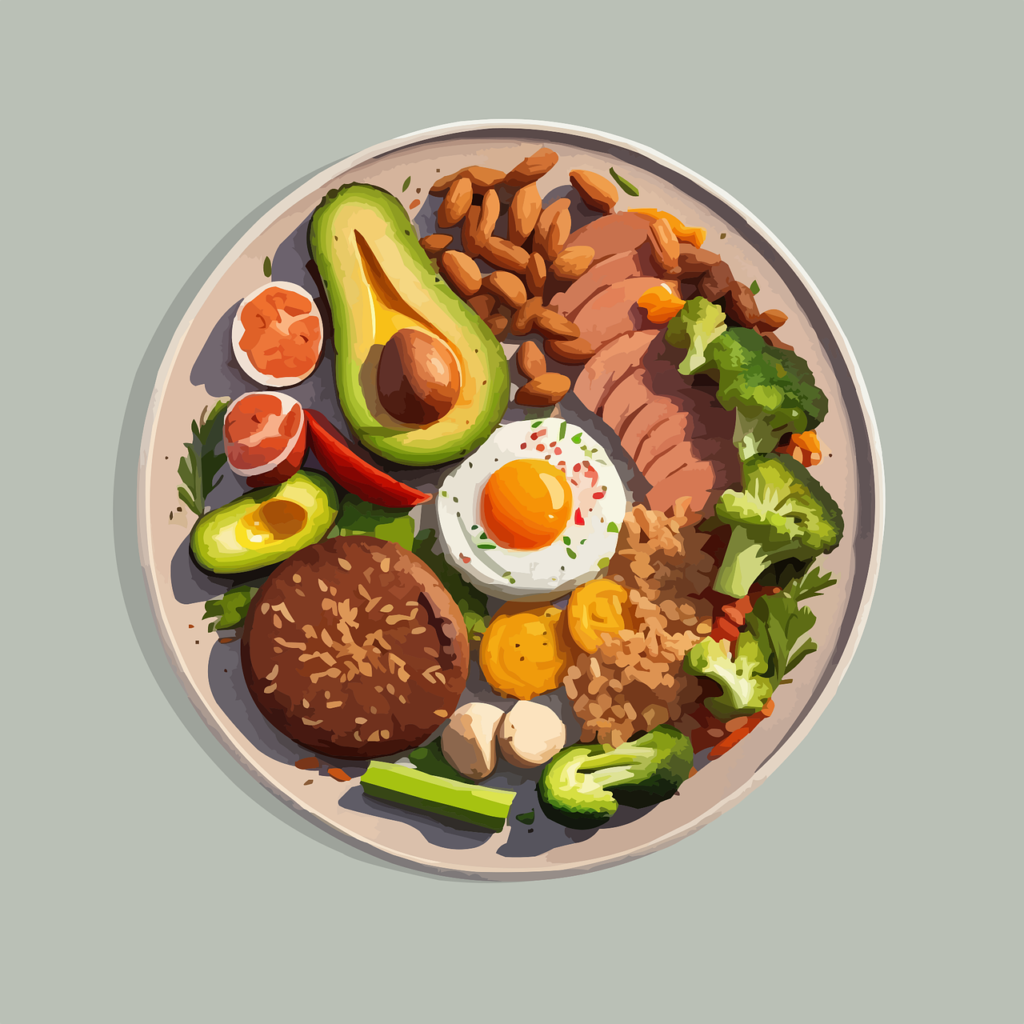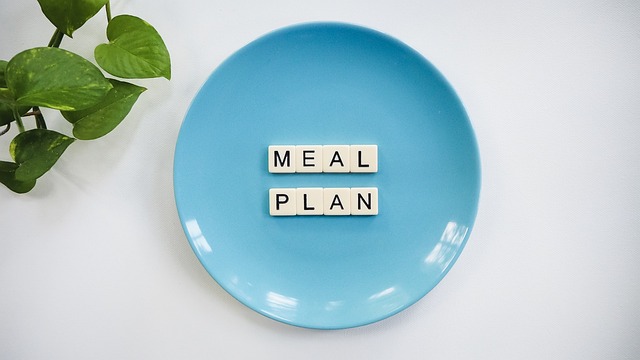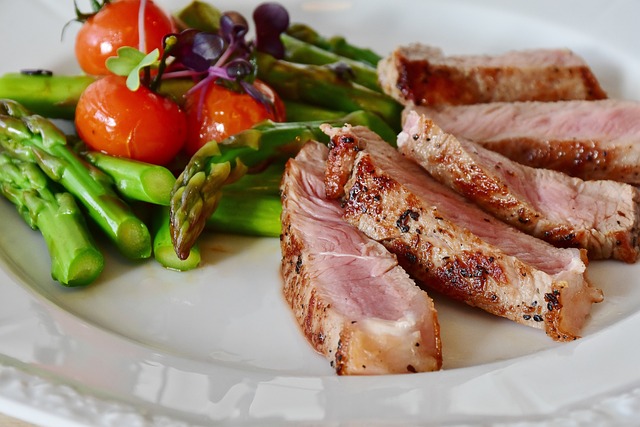
A diet food list is a useful tool for those who are trying to lose weight or maintain a healthy lifestyle. By having a list of foods that are low in calories and high in nutrients, individuals can make better choices when it comes to their diet. However, it is important to note that not all diet foods are created equal.
Some diet foods may be marketed as healthy options, but they may actually be high in sugar, salt, or other unhealthy additives. It is important to read labels and do research to ensure that the foods on a diet food list are truly healthy choices. Additionally, it is important to remember that a balanced diet is key to overall health and wellness, and simply focusing on a few specific “diet” foods may not be enough to achieve optimal health.
Table of Contents
Understanding Diet Foods
Macronutrients
Diet foods are typically categorized based on their macronutrient composition. Macronutrients are the nutrients that the body requires in large amounts for energy production and growth. The three main macronutrients are carbohydrates, proteins, and fats.
Carbohydrates are the primary source of energy for the body. They are found in foods such as fruits, vegetables, grains, and legumes. Proteins are essential for building and repairing tissues in the body. They are found in foods such as meat, fish, eggs, and dairy products. Fats are important for energy production, insulation, and protection of organs. They are found in foods such as nuts, seeds, avocados, and oils.
Micronutrients
In addition to macronutrients, diet foods also contain micronutrients. Micronutrients are the nutrients that the body requires in small amounts for proper functioning. They include vitamins and minerals.
Vitamins are organic compounds that the body needs in small amounts for various functions such as growth, development, and immune system support. Minerals are inorganic compounds that the body needs for various functions such as bone health, nerve function, and fluid balance.
Caloric Density
Diet foods are also categorized based on their caloric density. Caloric density refers to the number of calories per gram of food. Foods that are high in caloric density tend to be high in fat and/or sugar, while foods that are low in caloric density tend to be high in fiber and water.
Low-calorie density foods can help with weight loss because they tend to be more filling and can help reduce overall calorie intake. Examples of low-calorie density foods include fruits, vegetables, whole grains, and lean proteins. High-calorie density foods should be consumed in moderation and include foods such as fried foods, processed snacks, and desserts.
In summary, understanding the macronutrient and micronutrient composition, as well as the caloric density, of diet foods can help individuals make informed decisions about their dietary choices.
Whole Foods vs. Processed Foods
When it comes to choosing between whole foods and processed foods, it is important to understand the differences between the two. Whole foods are foods that are in their natural state and have not been altered or processed in any way. Processed foods, on the other hand, have been altered in some way, either through cooking, freezing, canning, or adding preservatives.
Whole foods are generally considered to be healthier than processed foods because they are more nutrient-dense and contain fewer additives. They are also less likely to cause inflammation and other health problems. Examples of whole foods include fruits, vegetables, whole grains, nuts, and seeds.
Processed foods, on the other hand, are often high in sugar, salt, and unhealthy fats. They also tend to be low in nutrients and fiber. Examples of processed foods include fast food, packaged snacks, and sugary drinks.
It is important to note that not all processed foods are unhealthy. Some processed foods, such as canned beans and frozen vegetables, can be a convenient and healthy addition to a balanced diet. However, it is important to read labels and choose processed foods that are low in added sugars, salt, and unhealthy fats.
Overall, choosing whole foods over processed foods can help improve overall health and reduce the risk of chronic diseases.
Diet Food Categories
Fruits
Fruits are an essential part of any healthy diet. They are packed with vitamins, minerals, and fiber that help to keep the body functioning properly. Some of the best fruits to include in a diet food list are:
- Apples
- Bananas
- Berries (strawberries, blueberries, raspberries)
- Citrus fruits (oranges, grapefruits, lemons)
- Kiwi
- Mango
- Pineapple
Vegetables
Vegetables are another crucial component of a healthy diet. They are low in calories and high in nutrients, making them an ideal choice for anyone looking to lose weight. Some of the best vegetables to include in a diet food list are:
- Leafy greens (spinach, kale, lettuce)
- Cruciferous vegetables (broccoli, cauliflower, Brussels sprouts)
- Root vegetables (carrots, sweet potatoes, beets)
- Bell peppers
- Tomatoes
- Cucumbers
Lean Proteins
Protein is essential for building and repairing tissues in the body. Lean proteins are a great choice for anyone looking to lose weight, as they are low in calories and fat. Some of the best lean proteins to include in a diet food list are:
- Chicken breast
- Turkey breast
- Fish (salmon, tuna, cod)
- Lean cuts of beef (sirloin, flank)
- Eggs
- Tofu
Whole Grains
Whole grains are an excellent source of fiber, which helps to keep the digestive system healthy and functioning properly. Some of the best whole grains to include in a diet food list are:
- Brown rice
- Quinoa
- Whole wheat bread
- Oats
- Barley
- Farro
Legumes
Legumes are a great source of protein and fiber, making them an excellent choice for anyone looking to lose weight. Some of the best legumes to include in a diet food list are:
- Lentils
- Chickpeas
- Black beans
- Kidney beans
- Lima beans
- Peas
Nuts and Seeds
Nuts and seeds are packed with healthy fats, protein, and fiber, making them an excellent choice for anyone looking to lose weight. Some of the best nuts and seeds to include in a diet food list are:
- Almonds
- Walnuts
- Pistachios
- Chia seeds
- Flaxseeds
- Sunflower seeds
Dairy Alternatives
Dairy alternatives are a great choice for anyone who is lactose intolerant or looking to reduce their dairy intake. Some of the best dairy alternatives to include in a diet food list are:
- Almond milk
- Soy milk
- Coconut milk yogurt
- Cashew cheese
- Tofu-based cream cheese
- Nutritional yeast
Remember to always consult with a healthcare professional before making any significant changes to your diet.
Special Dietary Considerations
Gluten-Free Options
For individuals with gluten intolerance or celiac disease, a gluten-free diet is essential. Fortunately, there are many gluten-free options available that can be incorporated into a healthy diet. Examples include quinoa, brown rice, almond flour, and gluten-free oats. Vegetables and fruits are also naturally gluten-free, making them great choices for those on a gluten-free diet.
Low-Carb Choices
Low-carb diets have gained popularity in recent years due to their potential for weight loss and blood sugar control. Some low-carb options include leafy greens, cruciferous vegetables, berries, nuts, and seeds. It is important to note that a low-carb diet should still include a variety of nutrient-dense foods to ensure adequate intake of vitamins and minerals.
Plant-Based Selections
Plant-based diets have been associated with numerous health benefits, including reduced risk of chronic diseases. For those following a plant-based diet, options include legumes, tofu, tempeh, quinoa, nuts, and seeds. It is important to ensure adequate intake of protein, iron, and vitamin B12 when following a plant-based diet.
Low-Sodium Alternatives
Reducing sodium intake can help lower blood pressure and reduce the risk of heart disease. Some low-sodium options include fresh fruits and vegetables, unsalted nuts and seeds, whole grains, and lean proteins such as chicken and fish. It is important to read food labels and avoid processed and packaged foods that are high in sodium.
Reading Nutrition Labels
Serving Size
The serving size is the amount of food that is typically consumed in one sitting. It is important to pay attention to the serving size on the nutrition label because all of the nutrient information listed is based on that serving size. If you consume more or less than the serving size, you will need to adjust the nutrient information accordingly.
Caloric Information
The caloric information listed on the nutrition label provides the number of calories in one serving of the food. This information is important for individuals who are trying to manage their weight. It is important to note that not all calories are created equal. A food that is high in calories may also be high in nutrients, while a food that is low in calories may be lacking in nutrients.
Ingredient List
The ingredient list on a nutrition label provides a list of all of the ingredients used to make the food. The ingredients are listed in order of weight, with the heaviest ingredient listed first. It is important to pay attention to the ingredient list because it can help you identify any potential allergens or ingredients that you may want to avoid.
In summary, reading nutrition labels can help individuals make informed decisions about the foods they consume. By paying attention to the serving size, caloric information, and ingredient list, individuals can better understand the nutrient content of the foods they eat.
Meal Planning Tips
Balanced Meal Composition
When planning meals, it’s important to ensure that they contain a balance of nutrients. A balanced meal should include a source of protein, complex carbohydrates, healthy fats, and plenty of vegetables. This will help to keep you feeling full and satisfied, while also providing your body with the nutrients it needs to function properly.
Portion Control
Portion control is key when it comes to maintaining a healthy diet. It’s important to be mindful of how much you’re eating, as overeating can lead to weight gain and other health problems. One way to control portions is to use smaller plates and bowls. Another tip is to measure out your food using measuring cups or a food scale.
Snacking Strategies
Snacking can be a healthy part of any diet, as long as you choose the right foods. When planning snacks, aim for options that are high in protein and fiber, such as nuts, seeds, and fruits. It’s also important to be mindful of portion sizes when snacking, as it’s easy to overdo it and consume too many calories.
By following these meal planning tips, you can create a healthy and balanced diet that will help you achieve your health and wellness goals.
Shopping for Diet Foods
When it comes to shopping for diet foods, there are a few things to keep in mind. This section will cover some tips on how to shop for healthy foods that will support your diet goals.
Seasonal Produce
One way to save money and get the freshest produce is to buy seasonal fruits and vegetables. In-season produce is usually cheaper and more flavorful than out-of-season produce. Plus, it’s more likely to be locally sourced, which means it’s often more sustainable.
Here are some examples of seasonal produce:
- Spring: asparagus, strawberries, peas, radishes
- Summer: tomatoes, cucumbers, watermelon, corn
- Fall: apples, pumpkins, sweet potatoes, Brussels sprouts
- Winter: citrus fruits, kale, winter squash, beets
Bulk Buying
Another way to save money on diet foods is to buy in bulk. This is especially true for non-perishables like whole grains, nuts, and seeds. Buying in bulk can also help reduce waste since you can buy just the amount you need.
Here are some examples of foods to buy in bulk:
- Whole grains: brown rice, quinoa, oats, barley
- Nuts and seeds: almonds, walnuts, chia seeds, flax seeds
- Legumes: black beans, chickpeas, lentils
Label Certifications
When shopping for diet foods, it’s important to pay attention to label certifications. These certifications can help you identify foods that are organic, non-GMO, or sustainably sourced.
Here are some examples of label certifications to look for:
- USDA Organic: indicates that the food was grown without synthetic pesticides or fertilizers
- Non-GMO Project Verified: indicates that the food does not contain genetically modified organisms
- Fair Trade Certified: indicates that the food was produced in a way that supports fair labor practices and sustainable farming methods.
By following these tips, you can make shopping for diet foods a little easier and more cost-effective.
Food Preparation and Storage
Healthy Cooking Methods
When it comes to cooking, it’s important to choose healthy methods that preserve the nutrients in your food. Steaming, baking, grilling, and roasting are all great options that can help you avoid excess oil and fat. Boiling and frying should be used sparingly, as they can strip your food of its nutrients and add unnecessary calories.
Proper Food Storage
Proper food storage is essential for maintaining the freshness and safety of your food. It’s important to keep perishable items like meat, dairy, and fruits and vegetables in separate containers to prevent cross-contamination. Use airtight containers or wrap your food tightly in plastic wrap to prevent spoilage.
Meal Prepping
Meal prepping is a great way to save time and ensure that you always have healthy options on hand. Start by planning out your meals for the week, and then prepare your ingredients in advance. This could include chopping vegetables, cooking grains, or marinating meats. Store your prepped ingredients in separate containers in the fridge, and then assemble your meals as needed throughout the week.
Overall, by using healthy cooking methods, proper food storage, and meal prepping techniques, you can ensure that your diet is both nutritious and delicious.
Monitoring Progress
Tracking Intake
To ensure progress is being made towards achieving dietary goals, it is important to track food intake regularly. This can be done through the use of a food diary or a mobile application that allows for easy tracking of meals and snacks. By keeping track of what is being consumed, individuals can identify areas where improvements can be made and adjust accordingly.
Adjusting for Goals
As progress is made towards dietary goals, adjustments may need to be made to ensure continued success. For example, if weight loss is the goal and progress has slowed, reducing daily calorie intake may be necessary. Alternatively, if the goal is to build muscle and progress has plateaued, increasing protein intake may be beneficial. It is important to consult with a healthcare professional or registered dietitian before making any significant changes to one’s diet.
Dietary Supplements
While a balanced diet should provide all necessary nutrients, some individuals may choose to supplement their diet with vitamins or minerals. It is important to choose supplements wisely and not exceed recommended dosages. Additionally, supplements should not be relied upon as a replacement for a healthy diet.
Overall, monitoring progress is an important aspect of achieving dietary goals. By tracking intake, adjusting as needed, and considering supplements, individuals can make progress towards their goals and maintain a healthy lifestyle.
Frequently Asked Questions
What are the top foods to include in a weight loss diet plan?
Some of the best foods to include in a weight loss diet plan are lean proteins, whole grains, fruits, vegetables, and healthy fats. These foods are nutrient-dense, low in calories, and can help keep you feeling full and satisfied.
How can I maintain a healthy diet on a daily basis?
To maintain a healthy diet on a daily basis, it’s important to plan ahead and make healthy choices. This includes choosing whole, unprocessed foods, cooking at home instead of eating out, and being mindful of portion sizes.
Which foods should be prioritized for a balanced diet?
A balanced diet should include a variety of foods from all food groups, including fruits, vegetables, whole grains, lean proteins, and healthy fats. It’s important to prioritize nutrient-dense foods and limit processed and high-calorie foods.
What should my grocery list consist of when trying to lose weight?
When trying to lose weight, your grocery list should consist of nutrient-dense foods such as fruits, vegetables, lean proteins, whole grains, and healthy fats. Avoid high-calorie and processed foods, and be mindful of portion sizes.
Can you provide a simple 7-day meal plan for weight loss?
Unfortunately, we cannot provide a specific 7-day meal plan for weight loss as individual needs and preferences vary. However, a good starting point is to focus on nutrient-dense foods and plan meals ahead of time to ensure healthy choices.
What are some healthy food options to eat every day for weight management?
Some healthy food options to eat every day for weight management include fruits, vegetables, whole grains, lean proteins, and healthy fats. It’s important to prioritize nutrient-dense foods and limit processed and high-calorie foods.

